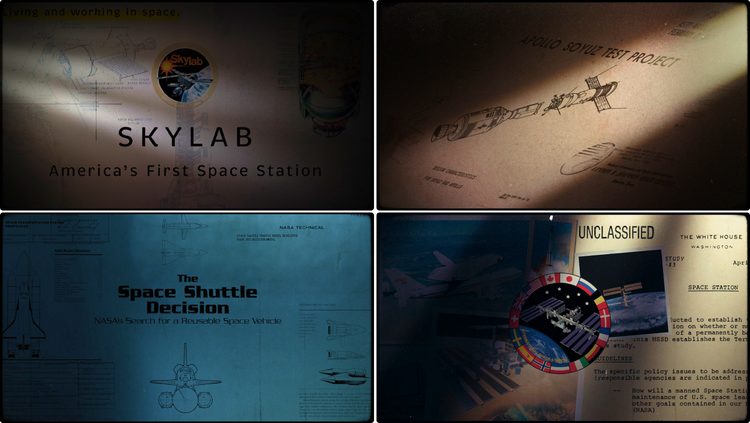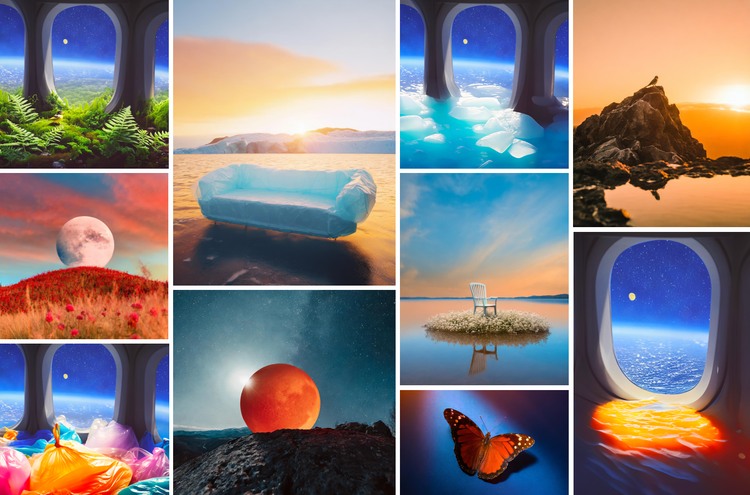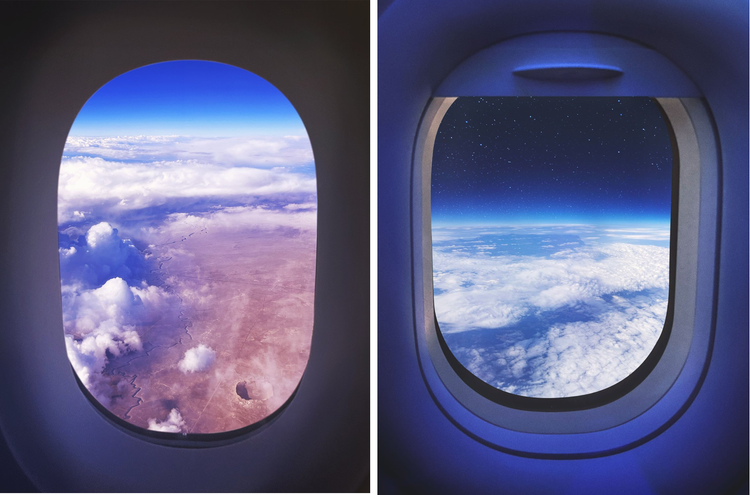Hacks, hobbies, and side hustles: NASA Image and Video Library
Gabriela Iancu-Mihai on using the space agency’s intergalactic archives for creative projects

Illustration by Gabriela Iancu-Mihai
In 2015, my photography professor at Savannah College of Art and Design (SCAD) suggested I investigate the NASA Image and Video Library for a new project I was working on. It wasn’t until many years later that I began contemplating a new project that would eventually become Apollo 11, a short film about the 1969 moon landing.
Assembled from thousands of hours of footage and audio recordings from Mission Control Center at NASA’s Johnson Space Center in Houston, it became a finalist in the CineSpace International Short Film Competition. Eventually streamed on the International Space Station, NASA TV, and Australia’s Space Channel, Apollo 11 also marked the start of my fascination with space and became the catalyst for a lot of new work.
Although it took years to contemplate the tools and methods that would allow me to challenge my personal perceptions of space and archival records, once I did, it unlocked new inspiration and purpose... and permanently altered my creative practice. Creativity is always in flux and that fluidity is most impacted by new projects and new tools. Exploring unfamiliar creative paths uncovers new passions, inspiration, and perspectives.
Look toward obstacles to stretch creative boundaries
The archival imagery of NASA could be described as an unsung hero of the photography world, with the quiet power to change beliefs about what space exploration means. Exploring that pool of abstract imagery, begging to be given a second life, sparked my imagination, but when I started thinking about how to create that first short film, the process seemed anything but straightforward.
The first thing I realized was the extensive research I’d need to do. Working with visual materials related to early space exploration required a deep dive into its history, significance, and cultural context. I spent months looking through NASA's archives trying to find just the right images and footage from the Apollo 11 mission to approach the film from my perspective of experiencing it for the first time—and to accurately capture the anticipation, emotion, and drama of the 1969 event. That fueled a desire to uncover some of the lesser-known aspects of the moon landing to deepen the narrative. I shined a light on the people, and the behind-the-scenes efforts that made that historic moment possible, but photography alone wasn't enough to capture the attention of audiences.

I used Adobe Premiere and Adobe After Effects to recontextualize historic footage and added creative techniques like split screens, immersive sound design, and observational style editing to build anticipation. The film frames provide a flexible system, adapting to the different film ratios used during that era and organizing sequences of the same scenes from various angles, locations, or time stamps. I reconstructed the mission's timeline and narrative to give the audience an immersive front-row seat to the moon landing—so it could unfold right before their eyes.
Experiment with new methods of creative production
Adapting to the challenges of new mediums is one way to stretch creatively. Finding new ways to use familiar tools—and experimenting with new creative technology—is another. Exploring creative software gave me new inspiration and became the spark that ignited new associations, new ideas, and a new body of work.
Welcome to Space, a film about unlimited possibility and international cooperation
Inspired by NASA's focus on building trust and cooperation to shape the future, I dove into learning about the International Space Station (ISS)—a place where science, technology, and human innovation collide in a way that feels like science fiction.
Eager to experiment with a 3D perspective and to push the boundaries of NASA's imagery, I created a visual system featuring cinematic chapter designs and volumetric lights that reveal and conceal details, that added drama as the missions unfolded. Using Adobe Photoshop and After Effects, I animated over 40 still photographs into captivating 3D scenes. Scanning the room inside the Mission Control Center or seeing the light reflect onto an astronaut’s extravehicular suit offers a 3D-perspective of analog photography—one where viewers could pick out details about the story.

Welcome to Space also covers several tracks of historical audio. Placed into the context of each mission are voices from the Houston Mission Control Center and the astronauts from space, and commentary from interviews, news reports, and presidents Gerald Ford and Ronald Reagan remastered with Adobe Audition. Recognized at NASA CineSpace in 2022, Welcome to Space screened at the Houston Cinema Arts Festival and Space Center Houston.
Interstellar Cocktail, an augmented reality journey
When Adobe Live invited me to create work with Adobe Aero in front of a live audience, I couldn't resist the opportunity to use a new tool to and a new process. Interstellar Cocktail began as an homage to the otherworldly imagery captured by the Hubble Space Telescope. From a whirlwind of ideas, each one sparking the next, I used Adobe Dimension to breathe motion into static images and to bring playful spheres to life, then merged them in Adobe Aero to create a seamless, flowing experience.
It’s a poetic augmented reality experience, where exoplanets, nebulae, and sounds from NASA’s “Sounds from Around the Milky Way” collide in an abstract cosmic cocktail. It draws people into a dance of movement and sound that feels entirely new, yet somehow familiar.
Human Nature, a generative AI exploration of climate action
My passion for space eventually led to a focus on the pressing challenges and concerns of climate change. I began to feel a deep sense of responsibility to use my creativity to inspire action. I knew that Adobe Firefly, Adobe’s family of creative generative AI models designed for safe commercial use, and a generative workflow, was the perfect way to access abstract, complex, and hard-to-reach ideas.

Incorporating AI into an artistic practice can be an exciting challenge, it can also be tricky to mirror a unique artistic voice using generated imagery. For me, the hardest part was the translation of my personal artistic vision into prompts that would generate outputs that balanced creativity, technology, and aesthetically-interesting results. I used Firefly and the generative AI features in Photoshop to enhance my photography, amplify my artistic style, and generate unique emotionally impactful images that speak to the complexities of how human action is affecting the planet.
From rising tides to melting ice caps, Human Nature addresses urgent climate issues like global warming, greenhouse gas emissions, air quality, and plastic waste in a quiet and poetic way.
Tips for taking on a new creative process or project
For artists, dreaming is the easy part, but the real magic happens when we roll up our sleeves and put in the work to turn ideas into reality. Transforming hurdles, interests, and curiosities into tangible creative output forges growth. It’s normal to feel uncertain when beginning a new project but there are ways to overcome even the most persistent doubts:
Follow your North Star
Stepping outside of creative patterns, using new tools, and exploring new topics can be difficult. But they can also spark creativity and forge unexpected connections. Plus, it's a great way to show others with similar dreams what’s possible. You’ll know you're on the right track when what you're doing aligns with your values, passions, and the impact you want to make. Keep following your path—and remember to have fun and embrace the adventure.

Lean into uncertainty
Working with public domain archival imagery was daunting, and initially felt like a limitation, but the existing visuals allowed me to bypass the complexities of taking photographs. Instead, I embraced an explorer's mindset, and remained open to where the journey might lead, and used the time to focus on the concept and the new tools I was using. When starting creative projects, we don’t always know where our process will lead, but taking the next step is usually the best way forward—even when the stars aren’t perfectly aligned.
Expand on a new perspective
You're on a flight, in a window seat, and raise the blind, for a quick glance at the scenery below. It's a view most of us have seen countless times, but this time, the bird's-eye view increases your awareness of the fragility and interconnectedness of life on our planet. Take advantage of those sparks of curiosity and daring to look at the world differently because among the biggest hurdles to creativity is limiting our beliefs. Focusing on the new ways you see the world can serve as a catalyst for creating meaningful work that reflects on those insights.

It’s easy to overlook the power of exploring beyond our comfort zones but it can lead to endless discoveries and inspire amazing new work. Playing a part in NASA's space history with that first documentary film created new playgrounds (space, our connection to nature, and our place in the universe) for curiosity and experimentation. As artists, we must always be ready to step into our creativity and ability to challenge ourselves, explore unfamiliar narratives, and experiment with new ideas.